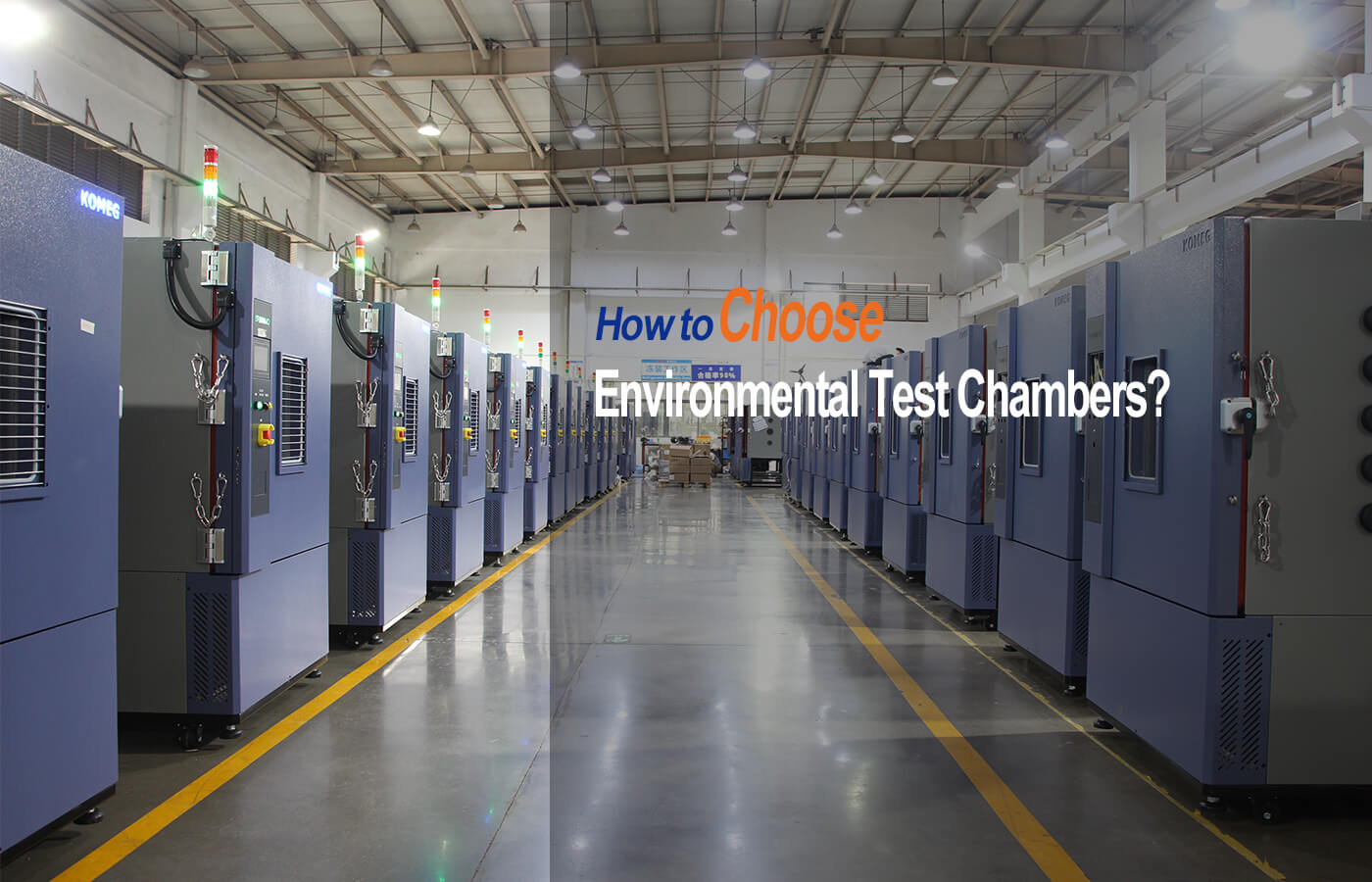Faced with so many brands of environmental test chambers, most customers often don’t know how to choose. So how can you choose the most suitable environmental test chamber? Today, let’s introduce the information that customers need to provide when purchasing an environmental test chamber.
Test Product Information
- Sample name: For test samples that are inconvenient to disclose, you can only provide the sample material.
- The weight, size, quantity, and shape of the sample: these determine the design of the environmental test chamber size and air flow direction.
- Does the sample need to be powered on?
- Will the sample generate heat?
- If there are other accessory products (such as carts, shelves), the weight and size must be provided.
Performance Parameters
- Environmental Chamber for Temperature and Humidity Testing
- Structure: Integrated/split/multi-zone
- Interior dimensions: Dimensions of a single test zone
- Exterior dimensions: Can be customized according to requirements, but generally based on final design
- Cooling Method: Air-cooled, Water-cooled
- Temperature Range: Required temperature range for frequent use
- Temperature Fluctuation: No-load/Loaded (e.g., KOMEG standard: No-load ±0.5℃)
- Temperature Uniformity: No-load/Loaded (e.g., KOMEG standard: No-load ≤2.0℃)
- Temperature Deviation: No-load/Loaded (e.g., KOMEG standard: No-load ≤±2.0℃)
- Temperature Change Rate: Requirements for heating and cooling rates, linear/non-linear, no-load/loaded (e.g., -40℃ to +100℃: 2℃/min, linear, no-load)
- Humidity Range: (e.g., 20%RH to 98%RH)
- Noise: (KOMEG standard: ≤75dB)
- Other Information: Testing standards, testing curves
- Environmental Chamber for Low Pressure Testing
- Pressure Range: (e.g., Normal pressure-0.5kPa)
- Pressure Rise/Fall Time: (e.g., Normal pressure~1kPa within 30 min)
- Pressure Recovery Time: the speed requirement for the air pressure to return to normal pressure.
- Thermal Shock Test Chamber
- Two/three-zone thermal shock chamber: Generally, the two-zone thermal shock chamber provides a more realistic shock effect. For smaller and lighter products, the vertical basket thermal shock chamber is recommended, while for products weighing over 50kg and large size, the left and right basket thermal shock chamber is recommended. The three-zone thermal shock chamber is suitable for products that cannot be affected by vibration.
- Basket/Interior dimensions: (Note: The Interior dimensions of Two-zone thermal shock chamber refer to the basket dimensions)
- Exterior dimensions:Accept customize, but generally based on the manufacturer’s design.
- Temperature shock range: The shock temperature range determines the compressor configuration and price.
- High-temperature chamber temperature range: (e.g., 60℃ to 200℃).
- Low-temperature chamber temperature range: (e.g., -20℃ to -75℃).
- Damper/basket transition time: generally within 10s (standard ≤5s).
- Temperature recovery time: (standard ≤5min)
- High temperature exposure: high temperature, ≤30min
- Low temperature exposure: low temperature, ≤30min
- Defrosting (number of cycles): 50/100/200… The more cycles, the higher the price (KOMEG can achieve over 1000 cycles).
- Defrosting recovery time: (Standard ≤120 minutes).
Structural Configuration
- Color: Generally, each brand of environmental test chamber has a standard color and can be customized.
- Cable port: Determine the size (φ50/100/150), quantity, and position.
- Observation window: Provide dimensions or designed by the manufacturer.
- Shelves: KOMEG standard configuration is 2 pieces. The desired quantity, load capacity, and material requirements for the shelves can be customized.
- Compressor: Generally designed by the manufacturer, it can also be customized.
- Controller: Some manufacturers have their own controller. Other brands can be customized.
- Automatic water replenishment device: It is recommended to add an automatic water replenishment device for long-term humidity testing.
- Fire protection: If there is a possibility of fire or explosion during the testing process, additional fire protection devices may be required, such as pressure relief vents, explosion-proof chains, explosion-proof windows, smoke sensors, exhaust fans, built-in cameras, external cameras, fire extinguishing devices, etc.
- Power cable: KOMEG standard configuration is 5m, customers can also bring their own or customize.
- Test report: Customers can request the manufacturer to provide if needed.
- Other configurations: Due to the complexity of environmental test chamber design and different customer needs, if there are other special configuration requirements, you can further confirm and add them with the manufacturer.
Installation Site
- Site dimensions: length, width and height (floor plan can be provided).
- Floor: Which floor and load-bearing.
- Aisles/entrances/elevators: If these areas will be passed through during the transportation process, corresponding dimensions need to be provided.
- Local climate: local highest temperature in summer.
- Installation site temperature: For example, if it is installed in a laboratory, provide the minimum and maximum temperatures of the laboratory.
The above content basically includes all the information that customers need to confirm when purchasing an environmental test chamber. The design of a temperature and humidity chamber requires confirmation of countless details and countless calculations. The more detailed the information and requirements provided by customers, the better our R&D personnel can design products that meet customer needs and are cost-effective.

